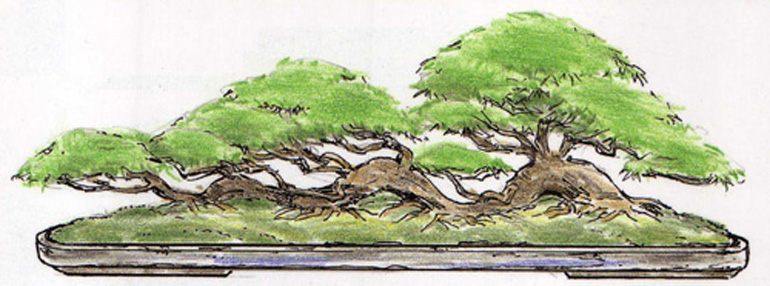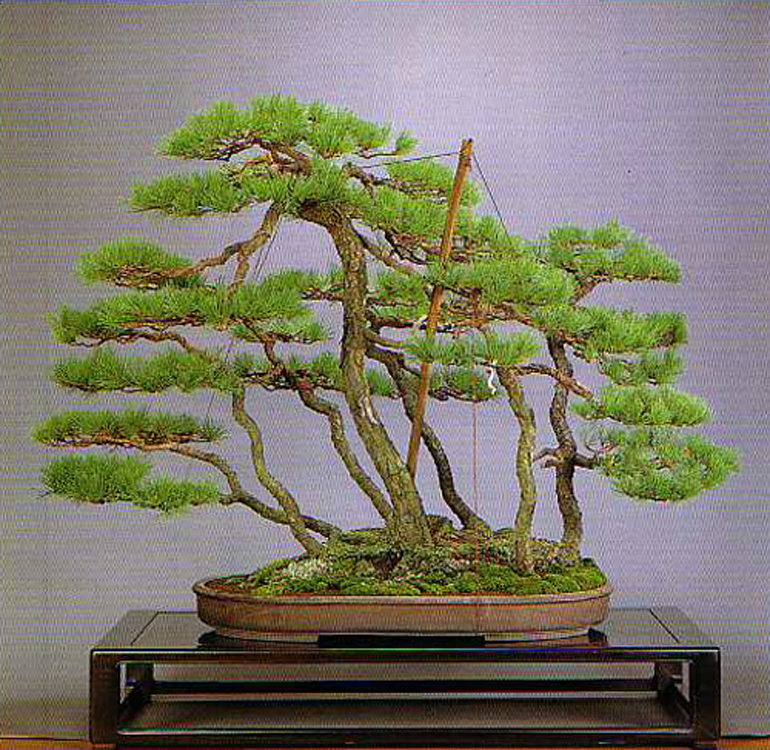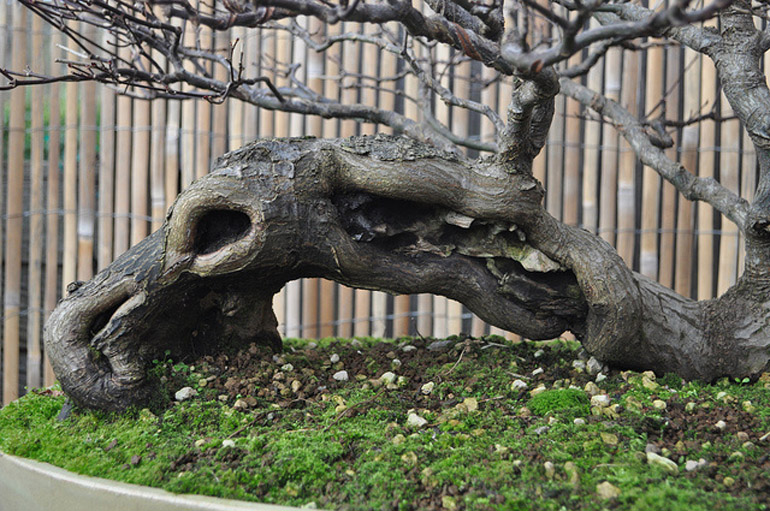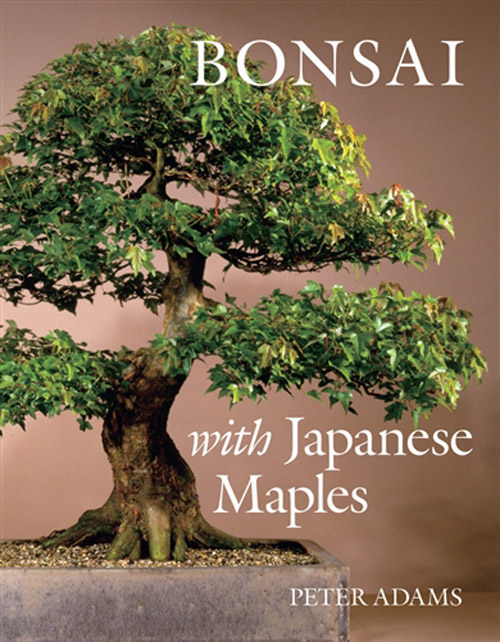This amazingly rugged sinuous root raft style planting is by our friend, Robert Steven. I don't know the variety, but my guess is that Robert, who seemingly keeps track of the entire bonsai universe, will let us know.
Rounding out our discussion of forest bonsai, it’s time to take a look at raft style bonsai. I don’t need to say much (Peter Adams has it covered below) except that all the rafts shown here are sinuous root style (netsunagari in Japanese) as opposed to rafts with straight line trunks (stay posted).
The section just below by Peter Adams originally appeared on Bark way back in 2010.

This very well rendered drawing by Peter Adams is from his book 'Bonsai with Japanese Maples.' It appears in a section called 'Creating Raft Trees' and on the back cover of the book. Whether or not this drawing comes from a tree in Peter's collection or is just from his imagination, we can't say. But one thing we do know; a quality ceramic pot that big (I imagine it to be at least 30 inches) will most likely set you back several hundred dollars.
Rafting in Peter’s own words
“The raft method… is formed by laying a tree on its side and encouraging it to root along the recumbent trunk. The branches on the underside of the old trunk are removed to facilitate it lying comfortably in the new posture. Other branches are left and are developed into trees.”
Or better still, with his drawings
I think the drawings are more or less self explanatory, depending on your experience and native intelligence (no insult intended).
We’re just here to whet your appetite
If you’d like more detail, try the book. Or lacking that, there’s always research.
You can use a box while roots are developed along the trunk, and if you can't afford a suitable pot, you can always leave it there.
The early steps: top to bottom. Notice how the upper limbs are wired to form interesting trunk shapes and how the lower limbs are removed before potting.

Where it all started. Sinuous root Japanese white pine after restyling by Isaburo Nishiyama (photo courtesy of Bonsai Focus). According to an article that appears in Bonsai Today issue 44, this the first netsuranari (sinuous root style) bonsai. It came to light in 1937 at a famous Japanese auction where it was distinguished from the older clump style bonsai. Most original sinuous root bonsai are Japanese white pines. That's a bamboo stick supporting the guy wires.
This one is a Hawthorn. You don’t see too many Hawthorn rafts (I know of no others) and I don't think I've ever seen one that overflows the pot on both ends. Speaking of, that perfect pot was made by the owner of the tree, John Pitt, a well-known and highly accomplished bonsai potter.
Here's a sinuous root bonsai where the original trunk is completely buried (or almost completely, I can't tell for sure). It's a Rockspray Cotoneaster (Cotoneaster horizontalis) in splendid fall color, by Bill Valavanis of International Bonsai. BTW: Bill, like Robert, is another old friend who seemingly keeps track of the entire bonsai universe.
The Japanese maple raft belongs to Stephen Dodds from Belfast Northern Ireland. It was originally purchased from Willowbog Bonsai. I like the way it arches up out out of the ground (twice), just like Peter's drawing (above). For more on this tree you can visit Bonsai Baker (Stephen's blog) and two Bark posts from 2012 (here and here).

Close up

The drawings and the quoted text above are from this book. As far as I know, it's the only book on Japanese maple bonsai in the English language. And yes, I know that's a Trident maple (Acer beurgerianum) on the cover, not a Japanese maple (Acer palmatum). Nor is it native to Japan (China and Taiwan according to Wikipedia). Still, misleading cover and all, it's available at Stone Lantern.
Robert's Mission of Transformation. The bonsai genius behind the tree at the top is the same bonsai genius that's behind this book. And even though it goes without saying, I'll say it anyway: available at Stone Lantern.